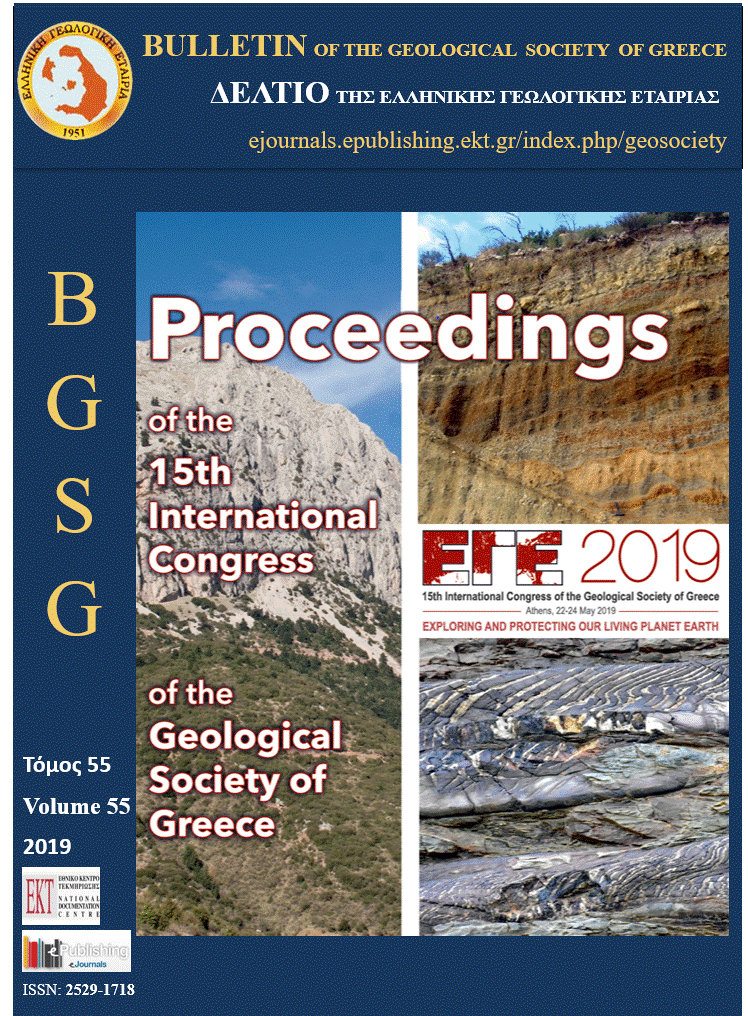Study of the chromite mineralization associated to ophiolites from Tinos Island, Attico-Cycladic Massif

Résumé
This paper aims to study the chromitites, as well as their host rocks (meta-peridotites, meta-dunites and serpentinites) of the ophiolite complex of Mount Tsiknias, in Tinos Island. Recognition of their mineralogy and their textural features was carried out through detailed petrographic study. The mineral chemistry analysis contributed to the evaluation of the analyzed chromites, the chemical composition of which provides important information about the petrogenetic evolution of the chromitite ores. The chromites were in equilibrium with boninite melts derived from Supra-Subduction Zone, e.g., a depleted mantle wedge. In the binary classification diagram for spinels, the Tinos samples extend in the fields of Mg-chromite and chromite sensu strictu. In the TiO2 vs Al2O3 diagram, the chromites plot in the field of Supra-Subduction Zone (SSZ) peridotites and partly overlap the field of chromites in Back-Arc Basalts (BABB), however the same samples plot in the field of chromite of boninites. In the Al2O3 vs Cr2O3 diagram both groups of Tinos chromites plot in the field/extremity of “mantle chromites”.
Article Details
- Comment citer
-
Kokkaliari, M., Seymour, K. S., Tombros, S. F., & Koutsopoulou, E. (2019). Study of the chromite mineralization associated to ophiolites from Tinos Island, Attico-Cycladic Massif. Bulletin of the Geological Society of Greece, 55(1), 185–201. https://doi.org/10.12681/bgsg.20777
- Rubrique
- Petrology and Mineralogy

Ce travail est disponible sous licence Creative Commons Attribution - Pas d’Utilisation Commerciale 4.0 International.
Authors who publish with this journal agree to the following terms:
Authors retain copyright and grant the journal right of first publication with the work simultaneously licensed under a Creative Commons Attribution Non-Commercial License that allows others to share the work with an acknowledgement of the work's authorship and initial publication in this journal.
Authors are able to enter into separate, additional contractual arrangements for the non-exclusive distribution of the journal's published version of the work (e.g. post it to an institutional repository or publish it in a book), with an acknowledgement of its initial publication in this journal. Authors are permitted and encouraged to post their work online (preferably in institutional repositories or on their website) prior to and during the submission process, as it can lead to productive exchanges, as well as earlier and greater citation of published work.


